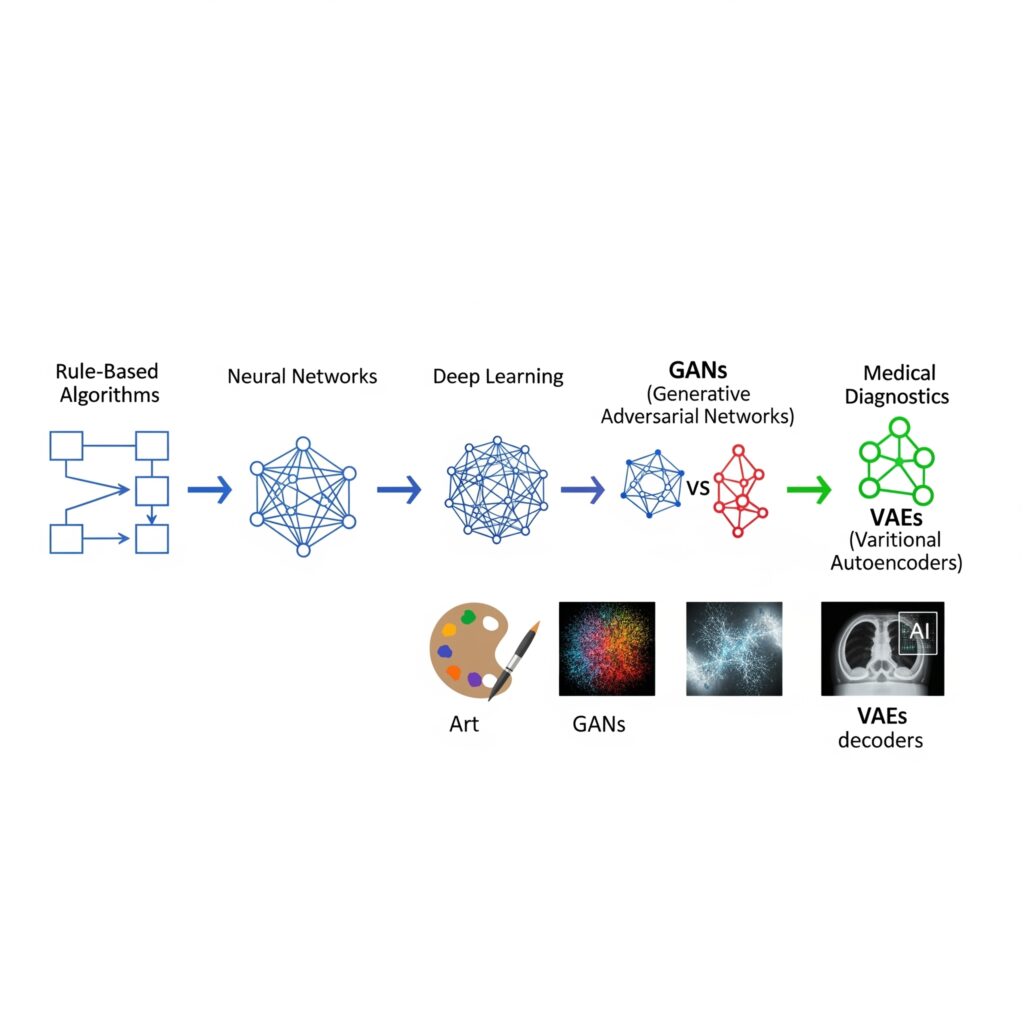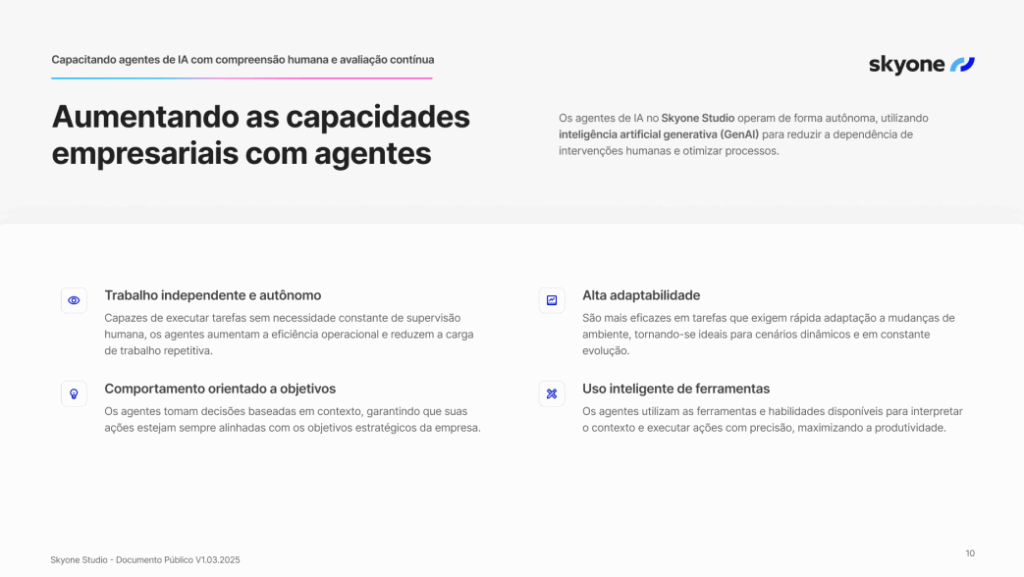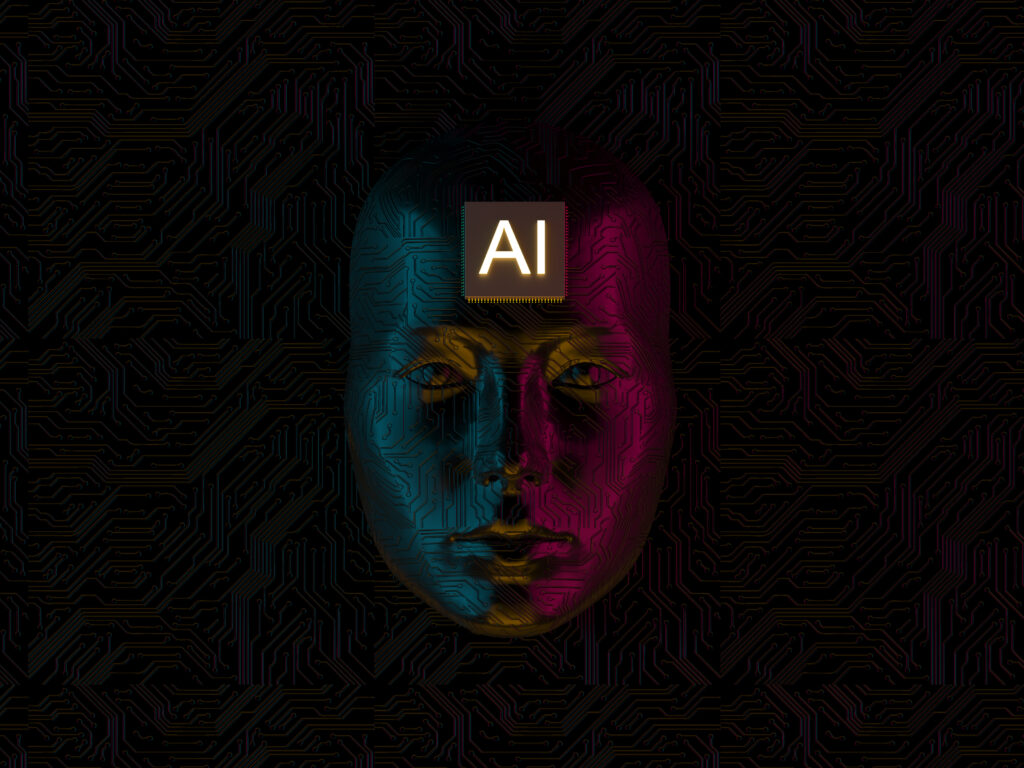Generative AI is transforming the world of technology. Simply put, it's a form of artificial intelligence capable of creating new content, such as text, images, music, and videos, from existing data.
Unlike other types of AI that simply analyze and classify information, generative AI learns complex patterns and replicates them creatively, offering new and surprising solutions.
Follow to the end and enjoy reading!
What is Generative AI? Definition and Fundamental Concepts
Generative AI is a subfield of artificial intelligence focused on creating new data. Unlike analytical AI, which organizes and analyzes information, generative AI creates original content, often indistinguishable from that produced by humans.
Its main foundations include:
- Artificial neural networks , inspired by the functioning of the human brain
- Generative models, such as:
- GANs (Generative Adversarial Networks)
- VAEs (Variational Autoencoders)
- LLMs (Large-Scale Language Models)
- Diffusion Models (widely used in image generation)
- GANs (Generative Adversarial Networks)
These models learn from existing data and generate new, realistic content, continually adjusting their results.
Read also: What are LLMs and how to apply them to your business with your own data
Brief history of generative AI
The origins of generative AI date back to the 1950s and 1960s, with algorithms based on logical rules. In the 1980s, advances in neural networks and backpropagation brought new possibilities.
In the 2010s, with the rise of deep learning and the launch of GANs and VAEs, generative AI became a practical and accessible tool for a variety of applications – from art to medical diagnostics.

How Generative AI Works: Principles and Technologies
Generative AI uses complex deep learning algorithms to identify patterns in data and generate new insights.
In models like GANs, the process can be divided into two parts:
- Generator: creates new data
- Discriminator: assesses whether the data generated is realistic
This constant feedback mechanism allows for continuous improvement of the system.
Main technologies used:
- Convolutional and recurrent neural networks: interpret visual and sequential patterns
- Supervised and unsupervised learning: enable adaptation to labeled and unorganized data
- Transformers and attention mechanisms: used in language models to generate contextually coherent texts
Differences between generative AI and traditional AI
To better understand, see a direct comparison between the two approaches:
| Feature | Traditional AI | Generative AI |
| goal | Analyze, predict and classify | Create new content |
| Data type | Structured and historical data | Textual, visual and creative data |
| Applications | Diagnosis, demand forecast | Creation of images, texts and videos |
| Approach | Analytics | Creative and adaptive |
Practical applications of generative AI in different sectors
Generative AI is already present in several segments:

In healthcare , AI supports diagnostics, performs automated screenings, and generates clinical reports more quickly. At the same time, the sector faces significant challenges, as many systems are not yet fully prepared to handle large volumes of sensitive data and automated workflows.
In entertainment , it enables the creation of music, films, scripts, and visual effects. In design and fashion , it assists in the prototyping and development of AI-assisted creations.
In marketing , it enables personalized campaigns and content production at scale, while in education it enables adaptive teaching materials and virtual tutors that enhance the learning experience.
It also democratizes the creation of content in different formats:
- Texts: articles, summaries, captions, scripts
- Images: illustrations, thumbnails, visual campaigns
- Audio: soundtracks, voiceovers, effects
- Videos: animations, automatic cuts, clips
Benefits and opportunities of generative AI
Generative AI offers benefits that go beyond traditional automation:
- Creative automation: generates original content and optimizes teamwork
- Cost reduction: manual tasks can be performed quickly by trained algorithms
- Innovation at scale: allows you to experiment with new ideas at low cost
- Personalization: adapts communications, products and services to each user's profile, increasing engagement
Risks and limitations
generative AI technology presents significant challenges that need to be addressed. Chief among these are algorithmic bias and a lack of transparency , which can lead to distorted or unfair results.
There is also the possibility of malicious use , such as the creation of deepfakes and the spread of disinformation, which pose serious threats to information integrity and public trust. Furthermore, generative AI is known for its high energy consumption , raising environmental and sustainability concerns. Finally, ethical and intellectual property issues , especially regarding authorship and the use of data for training.
According to the material produced by Hub Spot , generative AI is still in its infancy and "isn't designed to do everything." The most critical point is its dependence on data quality : models trained with incomplete or biased information tend to reproduce errors in the generated content. Therefore, the role of human creators remains essential – AI should be seen as a supporting tool, not a complete replacement. This dependence on data naturally leads to the next point: the importance of technologies and innovations that organize and enhance the use of this information.
Skyone Studio's role in the generative AI journey
The advancement of generative AI can only be fully realized when there's a solid foundation of data, system integration, and an environment ready for automation. This is precisely where Skyone Studio .

More than a solution, Skyone Studio is a product that connects data, integration, and artificial intelligence in one place. It organizes company information, automates workflows, and powers AI agents with GenAI (Generative Artificial Intelligence) capable of operating on channels like WhatsApp, optimizing sales, service, and operations.
Skyone Studio's Differentiators:
- Automated data collection, reducing manual work
- Reports with insights delivered directly to internal systems or messaging channels
- Publishing AI flows to interfaces like Google Chat or WhatsApp
- Ready-made connectors for over 400 systems (SAP B1, Zoho, HubSpot, among others)
- Low-code resources and expert technical support
With a robust and secure framework, Skyone Studio helps companies create and scale applications with generative AI, transforming data into real intelligence integrated into everyday business operations.
Conclusion
Generative AI is no longer a promise, it's a reality. It's transforming the way we create, innovate, and interact with technology.
If you're looking to apply GenAI to your company, industry, or institution, start now:
- Evaluate your infrastructure
- Map risks and opportunities
- Empower your team
- Look for reliable partners
Want to learn how to apply generative AI safely and with real results?
Talk to a Skyone expert and learn about our AI and data projects.
Author
-
Raquel is a marketing director with 15 years of experience in high growth B2B companies. It works in the development of integrated demand generation strategies, ABM, content and brand positioning, with expansion focus and acceleration of results. Throughout his career, led teams, boosted releases, and supported the entry into new markets. He believes marketing goes far beyond numbers, is about connecting people, solving problems and accelerating success stories.





